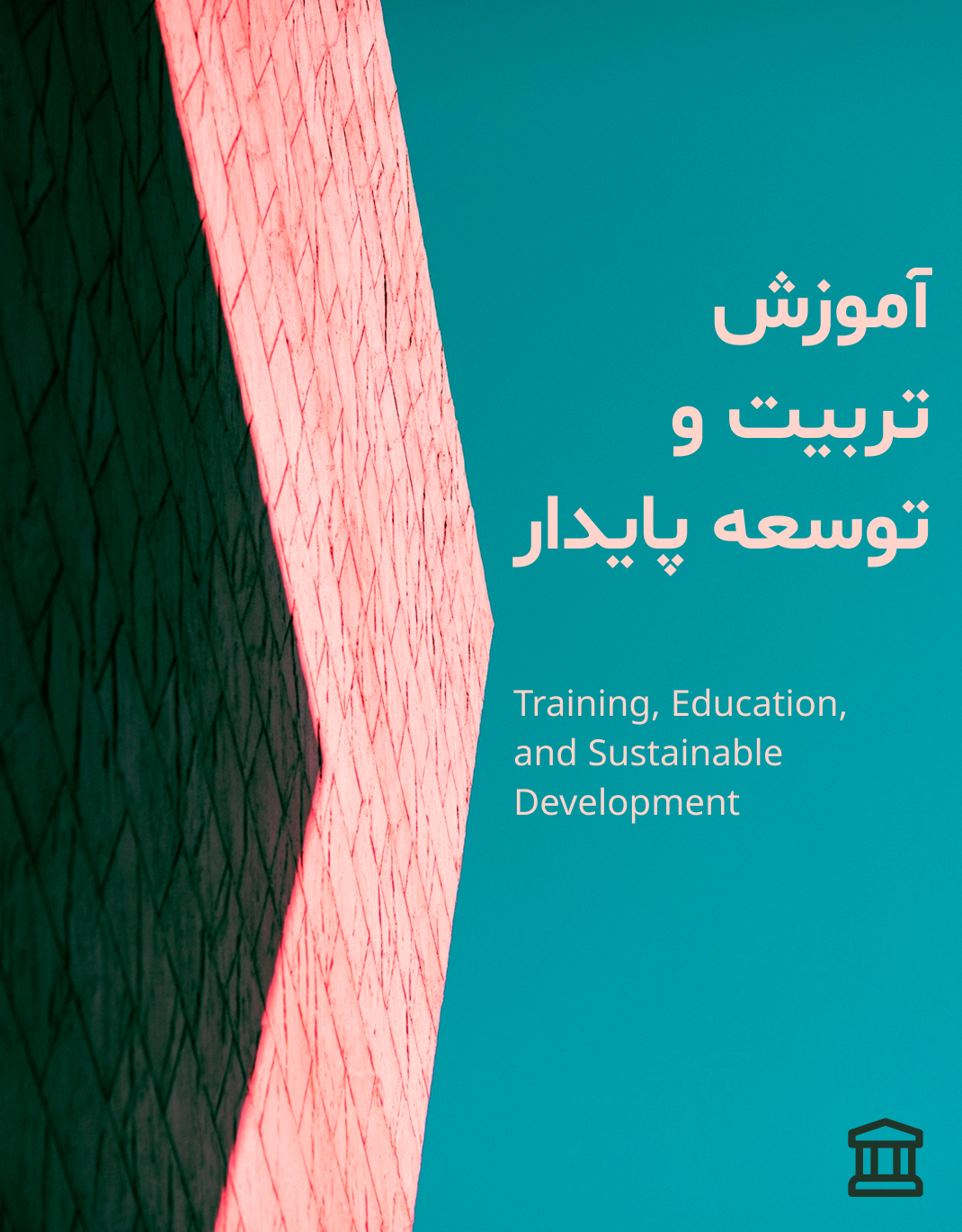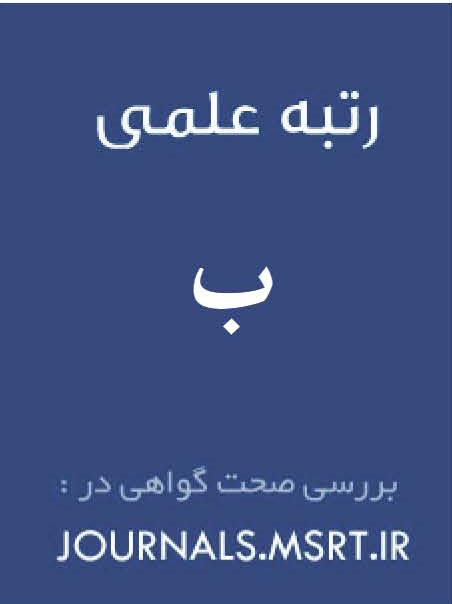تبلیغات بازرگانی تلویزیونی و مولفههای تولید پیامهای تلویزیونی در بانک سپه: مطالعهای با رویکرد آمیخته (کیفی-کمی)
کلمات کلیدی:
تبلیغات بازرگانی تلویزیونی, پیامهای تلویزیونی, صداقت و تطبیق وعدهها, آگاهی مشتریان, متقاعدسازی مشتری, تبلیغات اثربخشچکیده
هدف این پژوهش طراحی مدلی برای تولید پیامهای تبلیغاتی اثربخش بهمنظور ارتقای کارایی تبلیغات تلویزیونی در صنعت بانکداری بود. پژوهش حاضر با رویکرد آمیخته زنجیرهای (کیفی–کمی) انجام شد. در مرحله کیفی، دادهها از طریق مصاحبههای باز و نیمهساختاریافته با مدیران بانک سپه و استادان حوزه بازاریابی و مدیریت بانکی گردآوری شد و تا مرحله اشباع نظری با ۲۰ مشارکتکننده ادامه یافت. تحلیل دادهها با نرمافزار MAXQDA و با استفاده از روش کدگذاری باز، محوری و انتخابی انجام شد. در مرحله کمی، جامعه آماری شامل مشتریان و مراجعان شعب بانک سپه بود که ۳۸۴ نفر بر اساس جدول کرجسی-مورگان انتخاب شدند. دادههای کمی با استفاده از نرمافزار SmartPLS و آزمون تحلیل عاملی تأییدی برای سنجش روایی و پایایی مدل تحلیل گردید. تحلیل کیفی منجر به شناسایی چهار بعد کلیدی شامل صداقت و تطبیق وعدهها، آگاهی مشتریان، متقاعدسازی مشتری و تعیین مؤثرترین تبلیغات شد. نتایج کمی نشان داد تبلیغات تلویزیونی بانک سپه تأثیر معنیداری بر هر چهار بعد دارد. ضرایب بهدستآمده نشان دادند که تبلیغات بر آگاهی مشتریان (3.324)، صداقت و تطبیق وعدهها (11.663)، متقاعدسازی مشتریان (5.279)، و تعیین مؤثرترین تبلیغات از دید مشتریان (6.303) تأثیر دارد. تمامی روابط در سطح خطای ۰٫۰۵ معنادار بودند که بیانگر برازش مطلوب مدل نهایی است. نتایج تحقیق نشان داد تبلیغات تلویزیونی بانک سپه بیشترین تأثیر را بر ارتقای صداقت و شفافیت وعدهها و کمترین اثر را بر متقاعدسازی مستقیم مشتریان دارد. بر اساس یافتهها، طراحی پیامهای تبلیغاتی باید بر صداقت، آگاهیبخشی، جذابیت بصری و هماهنگی محتوایی تمرکز یابد تا اعتماد و وفاداری مشتریان تقویت شود. در مجموع، مدل پیشنهادی میتواند به عنوان چارچوبی راهبردی برای افزایش اثربخشی تبلیغات بانکی و ارتقای تعامل مشتریان مورد استفاده قرار گیرد.
دانلودها
مراجع
Bakouee, A., Amini Rad, H., Monazzeh, A. R., & Dindar, M. (2024). Investigating the Impact of Customer Experience on Traditional and Electronic Word-of-Mouth (eWOM) in Sina Bank Branches of Mazandaran Province. 2nd International Conference on Applied Research in Humanities, Economics, Management, and Accounting, https://civilica.com/doc/1897024/
Chiebonam, O. C., Hamad, H. A., Pauline, O. I., Gabriella, O. O., Rita, G. E., Celestine, G. V., & Iwundu, I. E. (2023). Effectiveness of interactive television instruction in improving the business competence and income level of women smallholder okra farmers. Women's Studies International Forum, 98, 102702. https://doi.org/10.1016/j.wsif.2023.102702
Chudzian, J. (2014). Impact of advertising on behaviour of consumers of low and high level of consumption of dairy products. Acta Scientiarum Polonorum. Oeconomia, 13(4), 19-30. https://aspe.sggw.edu.pl/article/view/466
Farooq, Q., Shafique, N., Khurshid, M. M., & Ahmad, N. (2015). Impact of comic factor in TV ads on buying behaviour of university students. International Letters of Social and Humanistic Sciences, 49, 12-20. https://doi.org/10.18052/www.scipress.com/ILSHS.49.12
Hosseini, S. A. (2023). Investigating the Relationship Between Television Advertising and Customer Objectification. 11th International Conference on New Research in Psychology, Social Sciences, Educational Sciences, and Training, https://civilica.com/l/123713/
Javadinia, H. (2024). Analyzing the Effects of Commercial Advertising on Urban Landscape and Citizens' Quality of Life from an Urban Management Perspective. 5th International Conference on Educational Sciences, Counseling, Psychology, and Social Sciences, Hamadan, Iran. https://civilica.com/doc/2288892/
Karimi Mazraeh Shah, M., & Ghaffari, M. (2019). Analyzing Factors Influencing Television Advertising Effectiveness from the Customer's Viewpoint. 5th International Conference on Management Sciences and Accounting, Tehran, Iran. https://civilica.com/doc/911876/
Khorrami, M., & Khadivar, A. (2024). Designing a Model for Television Advertising Effectiveness with a System Dynamics Approach. Scientific Journal of Business Strategies, 20(21), 37-56. https://cs.shahed.ac.ir/article_4421.html?lang=en
Mehmood, A., & Ul Sabeeh, N. (2018). Influence of Banking Advertisement of Bank Customer Satisfaction: An Examination of Pakistani Bank Customers' Choice.
Mohebbi, M. (2024). Investigating the Extent of the Impact of Environmental Advertising on Improving Social Media Advertising Performance. 2nd International Conference on Art, Culture, and Media Studies, https://civilica.com/doc/2217330/
Prodan, S., & Dabija, D. C. (2023). Adapting the digital servuction model to Central Banks: case study: European Central Bank. Administrative Sciences, 13(10), 217. https://doi.org/10.3390/admsci13100217
Rahimi, M., Mahmoudi, A., Ghorbani, M. H., & Kousaripour, M. (2023). The Role of Ethical Values in Television Advertising of Sports Products on Customer Behavioral Intentions. Research in Physiology and Management in Sports, 15(3), 9-24. https://www.sportrc.ir/article_191097.html?lang=en
Saeidi, K., Farhangi, A. A., & Soltanifar, M. (2017). Television Advertising Effectiveness on Audiences of the Islamic Republic of Iran Broadcasting (Case Study: Bank Refah). Journal of Communication Research, 24(3), 61-91. https://cr.iribresearch.ir/article_28770.html?lang=en
Sama, R. (2019). Impact of Media Advertisements on Consumer Behaviour. Sagepub, 3(9), 55-77. https://www.researchgate.net/publication/331093806_Impact_of_Media_Advertisements_on_Consumer_Behaviour
Seifollahi, N., & Naghavi, S. A. (2023). Simulation of the Impact of Advertising on the Attraction of Medical Tourists with a Factor-Based Modeling Approach (Case Study: Hospitals in Yazd City). Hospital Quarterly, Official Organ of the Scientific Association for Hospital Management of Iran, 21(4, Serial 83), 57-66. https://jhosp.tums.ac.ir/article-1-6570-en.html
Shahriyan, M., Mattani, M., Fallah, A., & Bagherzadeh, M. R. (2024). Identifying Effective Factors on Evaluating Television Advertising Effectiveness (A Qualitative Approach). Geography Quarterly (Regional Planning), 14(2, Serial 55), 221-235. https://www.jgeoqeshm.ir/&url=http:/www.jgeoqeshm.ir/article_203850.html?lang=en
Sharma, D., & Meena, R. (2024). Impact of COVID-19 on TV advertisements: informational, transformational & narrative analyses of post-COVID-19 TV advertisements. Journal of Marketing Communications, 30(1), 21-48. https://doi.org/10.1080/13527266.2022.2098518
Soleimanpour, M., & Norouzi, R. (2024). Modeling the Factors Influencing the Induction of Meaning in Television Advertising Messages on Consumer Behavior. Journal of Consumer Behavior Studies, 11(2), 24-42. https://cbs.uok.ac.ir/article_63305.html?lang=en
Zamani, A., Rahimi Nik, A., & Ne'mati Zadeh, S. (2021). Presenting a Model of Effective Advertising Based on Social Networks with an Emphasis on Relationship Marketing. Iranian Political Sociology Monthly, 4(4, Serial 16), 1534-1552. https://jou.spsiran.ir/article_157627.html?lang=en
Zephaniah, C. (2020). Examining the effect of customers' perception of bank marketing communication on customer loyalty. Scientific African, 8(3), 55-77. https://doi.org/10.1016/j.sciaf.2020.e00383
Zia, N. (2016). The role of advertising in consumer buying decision in Pakistan. Singaporean Journal of Business Economics, and Management Studies, 5(4), 39-47. https://doi.org/10.12816/0031280
دانلود
چاپ شده
ارسال
بازنگری
پذیرش
شماره
نوع مقاله
مجوز
حق نشر 2025 سیدمحمد افتخاری (نویسنده); رضا اسماعیلی; فرحناز مصطفوی کهنگی (نویسنده)

این پروژه تحت مجوز بین المللی Creative Commons Attribution-NonCommercial 4.0 می باشد.

